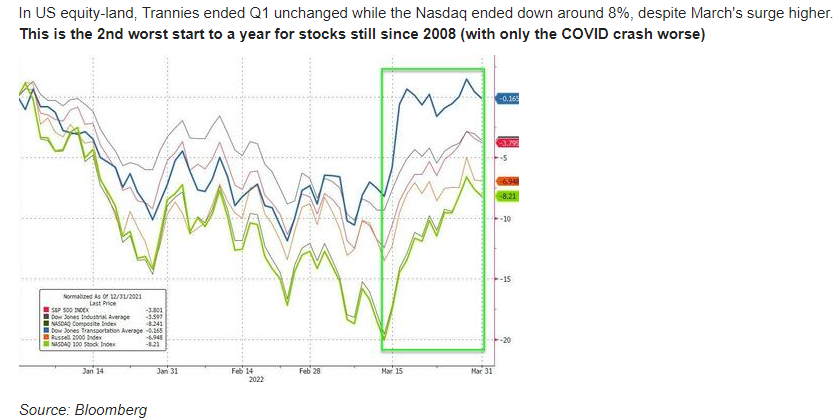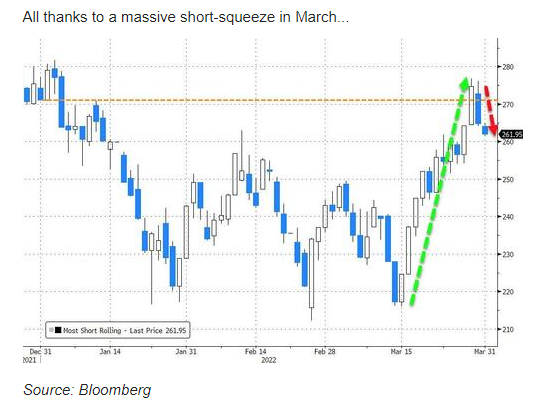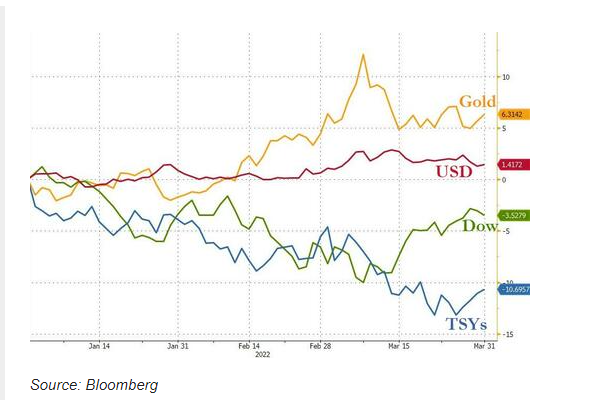For a host of reasons, March is a month anticipated by most Americans.
For those in cold climates, March signals the onset of Spring and warmer weather. Many people travel to warmer weather, and March is a period for getting away. For kids in school, especially college students, March is the gateway to "Spring Break."
March Madness, of course, describes the NCAA basketball teams competing in brackets and how frequently some of the best-ranked teams don’t get out of their early brackets. This year only 5% of the brackets submitted to the sports betting operators were still on target after only the first round!
You might be surprised to learn that betting on March Madness this year topped $3.1 billion. That number only covers the legitimate bracket contests and betting. I am confident that it is much higher than that.
The NCAA makes almost $1 billion dollars from March Madness.
The college basketball team that survives March Madness will be crowned the National Champion Monday night (Apr. 4), and this chapter of March Madness will be closed.
This year March Madness also occurred in the stock market.
The bears appeared to be the odds-on favorite coming into March after January and February’s volatile 20% decline in the tech-heavy NASDAQ. However, true to March Madness, the bulls responded by mounting one of the strongest 4-day rallies ever.
This rally caught many traders and investors off guard, however, unlike the NCAA, the market crowned its winners for March Madness (and the first quarter) last Thursday.
Also, unlike the NCAA, the year is not over, and there’s a lot more ‘excitement’ to come (not necessarily good).
For example, this year, another form of March Madness has been the outbreak of war in Ukraine which has only continued to expand and complicate markets.
Will The Correction Last?
Corrections of this magnitude and quickness typically don’t recover this rapidly. Going back to 1928, the average peak-to-trough pullback has been -16.3%. During the period from 1928 to 2021, stocks fell at least -10% in 63% of the years.
Given the factors of:
- Higher inflation,
- Potentially 5 to 8 additional interest rate rises by the Fed, and
- Midterm election noise…
We expect to see above-average volatility with stock surges in price both up and down.
We’ve written in this column repeatedly over the past few weeks that inflation may be the worst thing for stock prices in the next 1-2 years.
With inflation numbers similar to the early 70’s, we are all too aware that high inflation leads to a rapid rise in interest rates, a reduction of corporate revenue and profits, and then a slowdown in the economy.
When the market sees this coming, it leads to a contraction of market multiples—lower stock prices.
Our fear is that we are going to see unprecedented Stagflation that will add to the volatility of the markets and, at best, a sideways performing market.
Recapping The Quarter
- Global Bonds- worst drawdown ever
- US Bonds- 3rd worst Q1 since the Civil War
- US Yield Curve- greatest Q1 flattening ever
- Commodities - best start to a year ever
- Oil- best start to a year since 1999
- Regular Gasoline (at-the-pump) - fastest rise ever to record highs
- US Stocks- 3rd biggest short-squeeze rebound in March since the collapse of Lehman Brothers’ after the worst start to a year for stocks since 2009 (2nd worst in over 30 years)
Here is a good chart of just how volatile the stock market has been this past quarter.

Here are some additional details about the rally (March Madness):
- We had one of the fastest 10% rallies back from the abyss to help the markets recover much of 2022’s correction in just a few weeks.
- This rally ranked in the 99.5th percentile of snapbacks for a "bull" market and in the 98th percentile of bear market rallies.

Over the past few months, in this column and by our own Mish on national TV appearances, we have suggested diversification into commodities, oil-related stocks and ETFs, agricultural ETFs, energy-related ETFs, gold, and silver.
We want to continue with this mantra and call your attention to a number of our investment strategies being positive on the year. Primarily those concentrated in energy, agriculture, and precious metals.
In fact, gold was the strongest performer in the quarter, as illustrated in the chart below:

What We’ve Learned?
- Markets can and will turn on a dime. The risk management that we utilize is the best way to create a safety net below one’s portfolio.
- Following the advice of an experienced trader, like Mish, will help you capitalize on changing trends and brief but profitable opportunities. Her model portfolio was positive for the quarter, but more importantly, she avoided taking major losses as she suggested sitting in cash and preserving capital.
- Include commodities, agricultural ETFs, and selective energy-related stocks in your portfolio to provide insurance against out-of-control inflation and rising interest rates.
- Allocate more of your assets to our mechanical trading systems that rotate into sectors and areas of the market (energy, mining, and commodity-related themes) and out of high multiple growth stocks that can give up 20-50% in a short time, as many did.
- Get a "Financial Tune-Up" from a trusted Register Investment Advisor for little to no charge.
Last Week’s Noteworthy Market Conditions
Risk-On/Bullish
- The key indices worked off modestly overbought conditions by going sideways and holding their 10-day moving averages (+)
- The SPY retested support at its 200-day moving average and bounced off it (+)
- Market Internals for both SPY and QQQ are consistent with market action, working off overbought conditions and still staying strong (+)
- The New High/New Low ratio for SPY continues to improve as well (+)
- Risk Gauges are still in Risk-On mode but did back off slightly due to the SPY v. Utilities ratio(+)
- Sentiment indicators improved with volatility backing down under the 200-day moving average in the cash VXX (+)
- The number of stocks above key moving averages retraced a bit, but still held a Risk-On scenario(+)
- Growth vs. Value Stocks (VUG/VTV) continues to be Risk-On as growth outperforms value (+)
- Foreign Equities (EEM and EFA) outperformed US equities across the board, with EEM regaining its significant 200-week moving average (+)
Risk-Off/Bearish
- Risk-On sectors such as Semiconductors (SMH) and Transportation (IYT) got wrecked this week; each was down more than -4%, while Risk-Off sectors like Consumer Staples (XLP) and Utilities (XLU) stabilized the market (-)
- Short-Term rates (SHY) popped this week in anticipation of several more rate hikes to come this year (-)
- The Yield Curve continues to flatten (-) [It has since inverted]
- Despite the fact that IWM held its ground for the week, most of Mish’s Modern Family was down on the week, including Retail (XRT), Regional Banks (KRE), Semiconductors (SMH), and Transportation (IYT)(-)
- Retail (XRT), Transportation (IYT), Semiconductors (SMH), and Regional Banks (KRE) all lost the support of significant long-term moving averages, with iShares Biotechnology ETF (NASDAQ:IBB) being the only survivor of the Modern Family this week (-)
Neutral
- Volume Patterns remain mostly positive, with the exception of the NASDAQ 100 which now has only 1 accumulation day over the past 2 weeks (=)
- Foreign Equities led all asset classes this week, including Brazil (EWZ), India (IFN), China (FXE), as well as Biotech (IBB), having a surprisingly strong week (=)
- Commodities (GLD, USO, DBA) are in a high-level compression zone that is a make-or-break moment for the global commodities (=)
